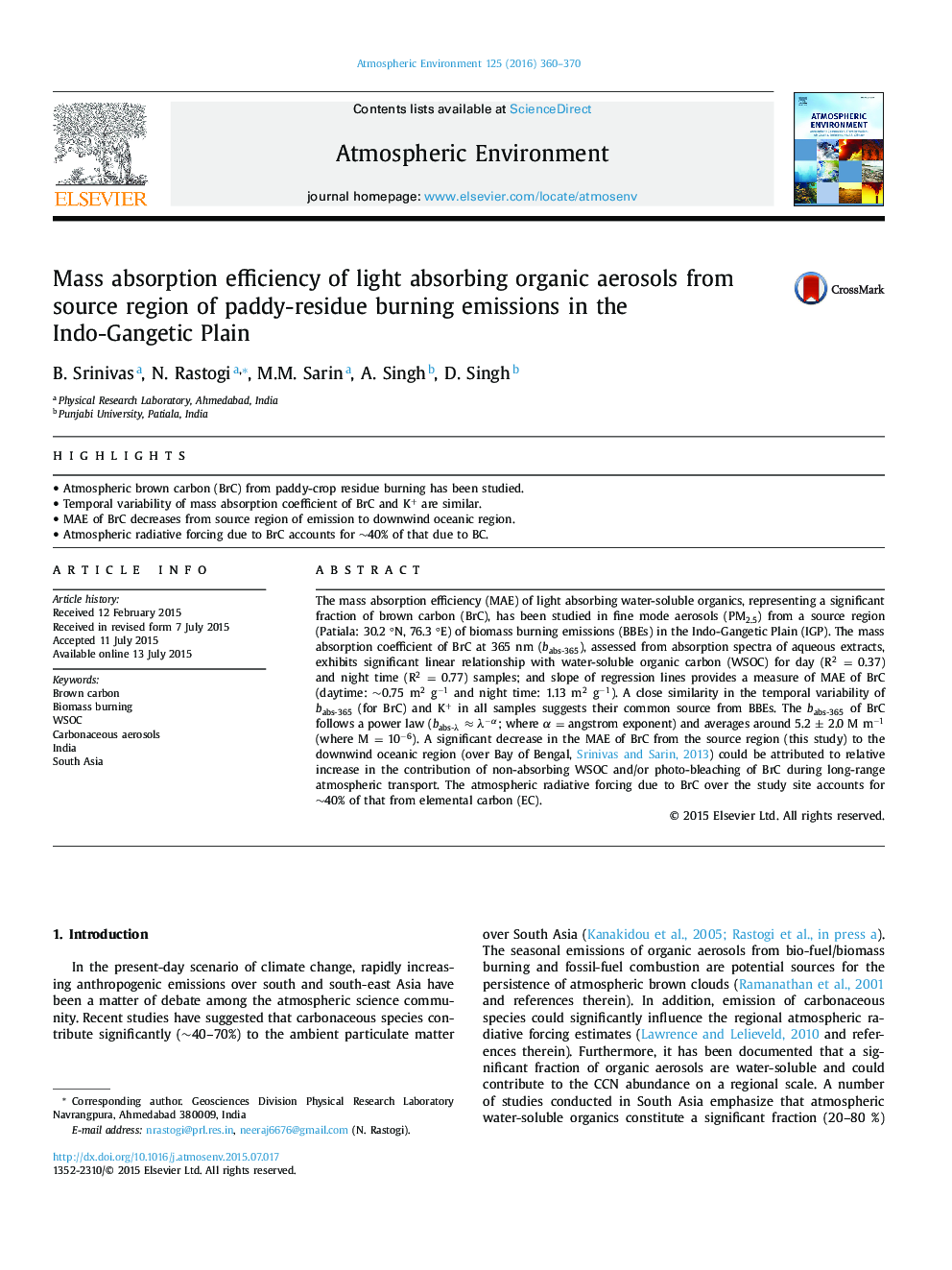| Article ID | Journal | Published Year | Pages | File Type |
|---|---|---|---|---|
| 4438067 | Atmospheric Environment | 2016 | 11 Pages |
•Atmospheric brown carbon (BrC) from paddy-crop residue burning has been studied.•Temporal variability of mass absorption coefficient of BrC and K+ are similar.•MAE of BrC decreases from source region of emission to downwind oceanic region.•Atmospheric radiative forcing due to BrC accounts for ∼40% of that due to BC.
The mass absorption efficiency (MAE) of light absorbing water-soluble organics, representing a significant fraction of brown carbon (BrC), has been studied in fine mode aerosols (PM2.5) from a source region (Patiala: 30.2 °N, 76.3 °E) of biomass burning emissions (BBEs) in the Indo-Gangetic Plain (IGP). The mass absorption coefficient of BrC at 365 nm (babs-365), assessed from absorption spectra of aqueous extracts, exhibits significant linear relationship with water-soluble organic carbon (WSOC) for day (R2 = 0.37) and night time (R2 = 0.77) samples; and slope of regression lines provides a measure of MAE of BrC (daytime: ∼0.75 m2 g−1 and night time: 1.13 m2 g−1). A close similarity in the temporal variability of babs-365 (for BrC) and K+ in all samples suggests their common source from BBEs. The babs-365 of BrC follows a power law (babs-λ ≈ λ−α; where α = angstrom exponent) and averages around 5.2 ± 2.0 M m−1 (where M = 10−6). A significant decrease in the MAE of BrC from the source region (this study) to the downwind oceanic region (over Bay of Bengal, Srinivas and Sarin, 2013) could be attributed to relative increase in the contribution of non-absorbing WSOC and/or photo-bleaching of BrC during long-range atmospheric transport. The atmospheric radiative forcing due to BrC over the study site accounts for ∼40% of that from elemental carbon (EC).
